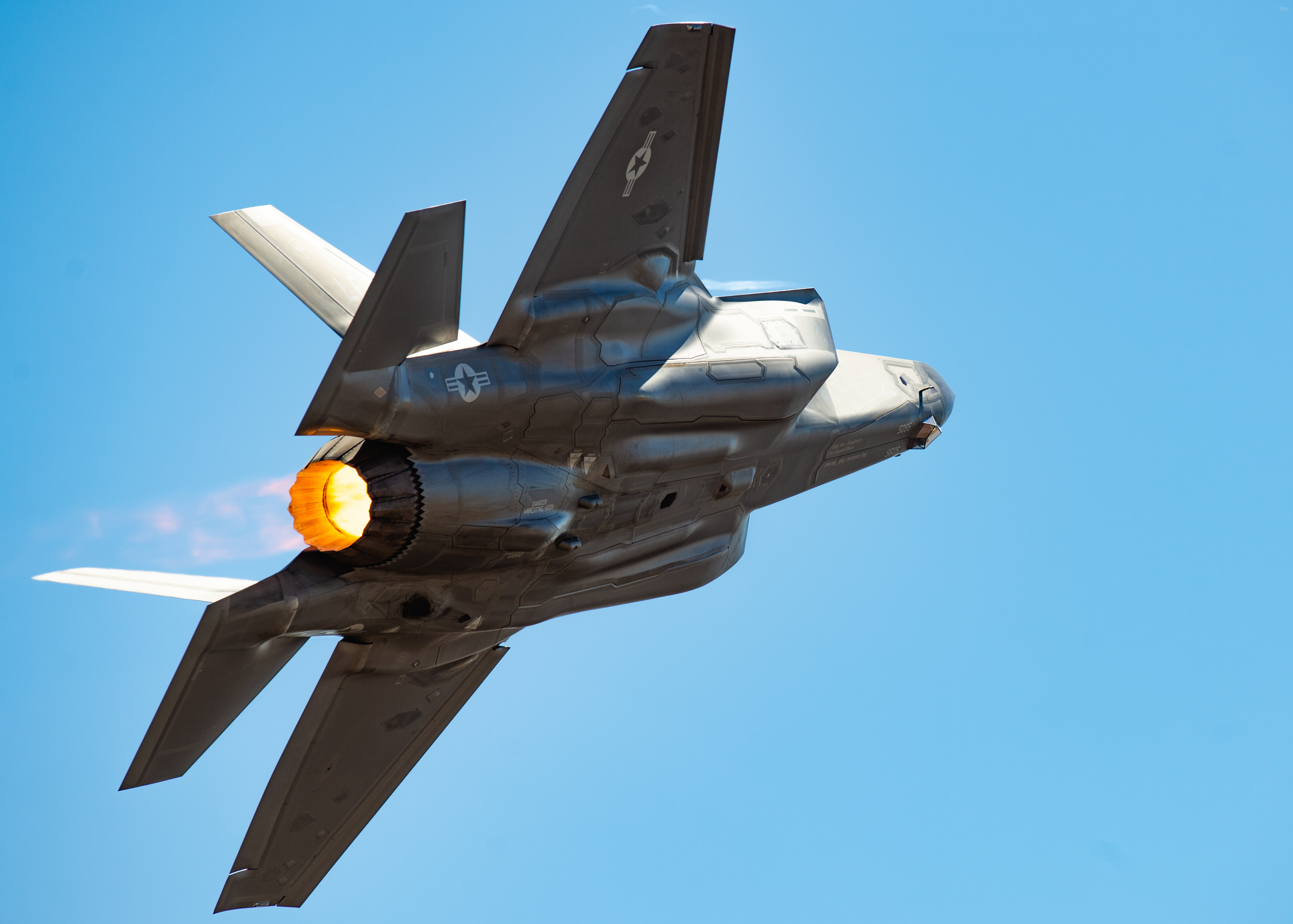
Capt. Andrew “Dojo” Olson, F-35 Heritage Flight Team pilot and commander, performs a tactical pitch maneuver in an F-35A Lightning II during the California Capital Airshow on Sept. 23, 2018, in Sacramento, Calif.
After being grounded last week, 80 percent of the operational U.S. and international F-35 Lightning II Joint Strike Fighter variants are now cleared to resume flight operations, following a fleet-wide fuel line inspection.
The entire F-35 enterprise halted flight operations Thursday so maintainers could inspect a fuel line inside each fighter’s engine. Lockheed Martin, the F-35 manufacturer, has delivered roughly 320 F-35s to the U.S military and international partners, according to the F-35 Joint Program Office.
The Marine Corps has two squadrons of its F-35B vertical lift-off and landing variants deployed with the Essex and Wasp Amphibious Ready Groups. The Essex ARG entered the Persian Gulf the day before the JPO grounded all F-35s. By Monday, all F-35Bs deployed aboard USS Essex (LHD-2) were cleared to resume flight operations, a Marine Corps spokesperson told USNI News.
Currently, the Navy does not have any of its F-35C arrested landings; catapult launched variants underway.
The JPO ordered the inspections following preliminary results from the investigation into the September 28 F-35B crash from Marine Fighter Attack Training Squadron 502 (VMFAT-501) near Marine Corps Air Station Beaufort.
The inspections were looking for specific defects in a fuel tube in the Pratt & Whitney F135 engine that powers all F-35 variants, according to the JPO.
“If an engine had a suspect fuel tube installed, the part would be removed and replaced. If the engine had a known good fuel tube installed, then the aircraft could return to flight status,” an F-35 JPO statement said about the inspections.
The following is the complete statement from the F-35 Joint Program Office.
UPDATE: F-35s returned to flight after engine inspection
After completing inspections, more than 80 percent of operational F-35s have been cleared and returned to flight operations. All U.S. services and international partners have resumed flying with their cleared aircraft.
The F-35 Joint Program Office continues to work closely with the military services to prioritize fuel tube replacements using the current spares inventory. Pratt & Whitney is rapidly procuring more parts to minimize the overall repair timeline for the remaining jets. Current inventory will restore about half of the impacted jets to flight operations, and the remaining aircraft are expected to be cleared for flight over the coming weeks. The issue is not expected to impact F-35 deliveries and the program remains on track to meet its target of 91 aircraft for the year.
On October 11, 2018, the F-35 Joint Program Office issued an enterprise-wide inspection of a fuel tube within the engine on all F-35 aircraft. If an engine had a suspect fuel tube installed, the part would be removed and replaced. If the engine had a known good fuel tube installed, then the aircraft could return to flight status.
More than 1500 suppliers are on the F-35 program and this is an isolated incident which is quickly being addressed and fixed. Safety is our primary goal, and we will continue to take every measure to ensure safe operations while we execute our mission.
The action to perform the inspection resulted from the ongoing investigation of the F-35B that crashed in the vicinity of Beaufort, South Carolina on 28 September. The aircraft mishap board is continuing its work and the U.S. Marine Corps will provide additional information when it becomes available.
The primary goal following any mishap is the prevention of future incidents. We will take every measure to ensure safe operations while we deliver, sustain and modernize the F-35 for the warfighter and our defense partners.
